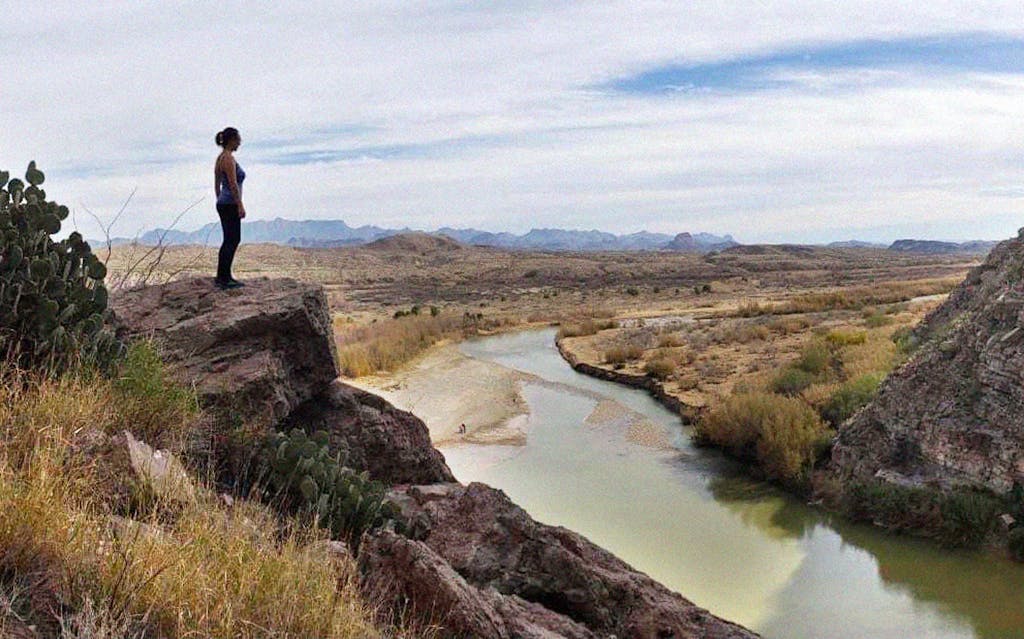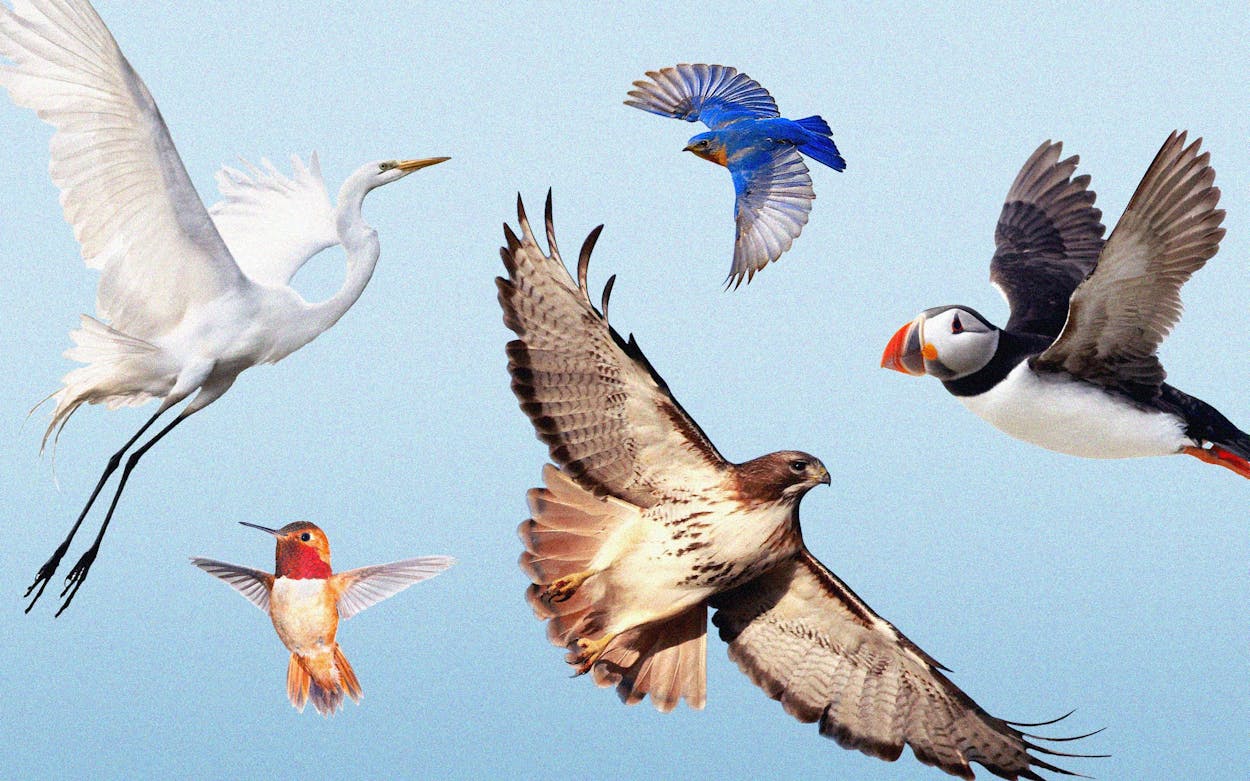WHO: Tiffany Kersten, a formerly down-on-her-luck Mission resident turned jet-setting, record-breaking bird-watcher.
WHAT: At the end of December, after driving 49,000 miles and hopping on more than fifty flights across the country, Kersten, 35, broke the American Birding Association’s record for most bird identifications in the lower 48 states within a calendar year.
Known as a Big Year, the daunting project is a little like a self-directed, avian-focused version of The Amazing Race. Kersten saw 726 species, topping the previous high of 724.
WHY IT’S SO GREAT: In February of last year, Tiffany Kersten was unemployed, stressed about paying her mortgage, and still reeling from the emotional distress caused by a sexual assault two years prior. She had recently been let go from her job at the McAllen Nature Center and felt like she had lost direction.
With no real plans other than trying to make some money, Kersten started guiding small bird-watching tours in South Texas. She’d fallen in love with birds watching sandhill crane mating rituals in Wisconsin at age twelve, and had led sporadic guiding trips over the past ten years. As luck would have it, one of her first clients was another avid bird-watcher named Charlie Bostwick. Bostwick was in Texas working on a Big Year—birder lingo for the effort to spot as many different species of birds as possible within a calendar year. As the two traveled around the Rio Grande Valley, looking for green jays and great kiskadees, Kersten told Bostwick about the transitional period she was in. He suggested that she go for a Big Year, too. She was initially reluctant to take on such a daunting project.
“I have a house; I need to get a job; I need to get my life in order,” Kersten recalls thinking. “I can’t just run around the country looking at birds.”
A few weeks later, in a dry spell between guiding gigs, Kersten went camping in West Texas. On a tight budget, cooking meals on a camp stove, she had a sudden change of heart. If there was ever a time to do a Big Year, it was now. So with only five days of clothing, a sleeping bag, and a tent packed into her little purple Chevy Spark, she set off west across the desert toward California.
Big Years, far from the serene, meditative activities usually associated with bird-watching, are fast-paced, intense, and expensive. Birders follow a checklist compiled by the American Birding Association, a long list of accepted species reviewed by experts. Only these birds count toward the record, and bird-watchers end up crisscrossing the United States—not unlike the migratory species they’re chasing—as they attempt to check each one off the list. The first few hundred birds come easily, but each passing species becomes more difficult. To find the last few dozen, Big Year birders rely on reports from other avian fanatics to chase rare sightings across the country. These seekers often buy same-day plane tickets, spend hours in airports and rental cars, and sink hundreds of dollars into meals and hotels—all with the knowledge that their feathered quarry could fly away moments before they arrive. Only a handful of birders have ever spotted more than seven hundred different species in the lower 48 states during a Big Year.

Greg Neise, a staff member with the American Birding Association, says that’s a massive achievement. “You clean up the easy birds throughout the year,” he says. “But by the time you get to mid-November, any bird you add is going to be extremely rare.”
As Kersten worked her way west, doubts began to creep in. Online, a woman in the bird-watching community posted about being sexually assaulted while out birding. The allegations brought back frightening memories for Kersten. But then, a few days later, an ad for a personal-safety alarm company popped up in her social media feed. It got her thinking: what if her Big Year could be about more than just bird-watching? She knew better than anyone the fear that came with traveling alone, birding in remote places. Maybe she could give these personal alarms to women she met out on the road, raise awareness about women’s safety, and do a Big Year all at the same time. Kersten reached out to the alarm company, serendipitously called She’s Birdie, and launched a fundraising page for the alarms on March 8, International Women’s Day.
As Kersten made her way up the West Coast, she was surprised by the openness of the women she met. Handing out alarms to fellow travelers, she sparked conversations about safety, life, and shared experiences. Female birders she connected with on Facebook often offered Kersten a place to stay when she came through town. Meanwhile, bird sightings were coming fast and furious. It all felt right. Kersten spent dozens of nights camped beneath the stars, watching the phases of the moon. She felt like she was healing.
By the end of February, she had ticked off more than four hundred birds. After chartering a series of fishing boats to find offshore species, her count grew higher: five hundred birds in March, then six hundred by the middle of May. On October 2, thanks to a blue-footed booby spotted off the coast of California, she hit seven hundred. The all-time record for identifications in the lower 48 states was 724 species.
“At that point a record wasn’t super likely, but it was possible,” Kersten says.
Exhausted, she began the long journey home. When Kersten arrived back in Texas, her home air-conditioning was broken, she had a slow leak in a tire, and she hadn’t seen her dog in weeks. The record was within reach, but at what cost?
The year hadn’t been all bird-watching and beautiful sunsets. Along the way, there were long stretches of isolation and loneliness. Kersten’s world had become a loop of unfamiliar places and endless identifications. She spent her birthday on the road in Oregon, searching for a short-tailed albatross. A windstorm in Arizona on Valentine’s Day forced Kersten to abandon her plan to sleep in her car; she eventually found one of the few un-booked motels outside of Phoenix.
Now finally back in Texas, she wasn’t sure if she wanted to keep going. But within an hour of arriving home in Mission, her phone lit up with texts from friends in Sacramento and Marin, notifying her of two rare species that had popped up in Northern California. After two days hemming and hawing, Kersten bought a same-day ticket back to California. She was going for the record.
The next three months were a blur of airports and travel. Kersten kept booking flights, whizzing back and forth across the country. The thrill of seeing new birds morphed into an intense pressure. When she finally spotted a species she’d been looking for, there was little excitement, just relief.
In Oklahoma on December 18, Kersten found a Smith’s longspur—her 724th bird of the year. With two weeks left before the end of 2021, she needed just one more bird to break the all-time record.
Just then, she got a tip: a bat falcon had been spotted in the Santa Ana National Wildlife Refuge south of McAllen, not thirty minutes from her house, and in the park where she had worked when she first moved to Texas.
Kersten immediately boarded a plane back home, arriving in Texas at 4:30 p.m., with only an hour left of sunlight. The bat falcon had never before been documented in the United States. It seemed impossible that this rare bird, in this place with such a personal connection, could be the record-breaking species.
She pulled into the wildlife refuge and sprinted from her car, rushing past birders as she ran down the refuge road toward an observation tower. When she arrived, the bird was perched peacefully on a dead tree in the thornscrub. Number 725: a new record. (She later snuck in one more sighting, a northern lapwing, in New Jersey, finishing with 726 birds.)
As the day faded into a humid Texas night, Kersten realized she was crying. Breaking the record almost felt beside the point.
“It’s about so much more than a number,” she says. “Traveling solo, connecting with woman birders along the way—it’s been a life-changing, transformative experience. But I’ll never, ever do it again.”
related video: Texas Country Reporter
In this dispatch from Texas Country Reporter, visit to Quinta Mazatlan in McAllen, a sanctuary for birds, plants, and environmental stewardship.
- More About:
- Critters
- Best Thing in Texas
- Birding
- Mission
- McAllen






